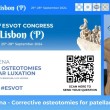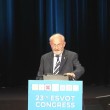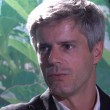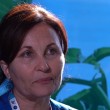Anthony Paul Black (Tony)
B.V.Sc. ( Hons), 1974, The University of Sydney, FANZCVSc. 1982
Employment after graduating until current. I spent 21/2 in general small animal practice in Sydney before commencing a surgical residency program at The Western College of Veterinary Medicine at The University of Saskatchewan , Saskatoon , Canada in 1977. At the time, there were no formal residency training programs in Australia.
On completion of my residency I began a position as a soft tissue surgeon at The Animal Medical Center (AMC) in New York. I returned to Sydney to try and start a specialist practice in 1981. Private specialist practice in Australia at the time was virtually unknown. In 1982, there were no training programs and no specialist practices in Sydney, although there was one specialist surgeon in general practice, one radiologist and one ophthalmologist. The first specialist only practice had opened and closed prior to my return and had been run by Drs Rob Furneaux, surgeon, Doug Slatter, ophthalmologist and Dick Dixon as radiologist.
I worked in general practice whilst trying to build a specialist practice. Frankly, it took a long time to convince general practitioners that specialist only practice could genuinely offer a service which was different to their practice, worthwhile for their patients and important to their clients. It was the way of the future that they could not yet see. Old habits die hard and I was just one more veterinarian competing with them. It was difficult trying to convince practitioners that clients referred to me would return back to their practice. At the time , there was also a very strong Australian ethos of “ she’ll be right mate and Ill just have a go myself, thanks”. Gradually, after years of lecturing to veterinary students, the public and veterinarians and doing less and less general practice, the tide turned and I began specialist only practice in 1985. I worked as a solo surgeon for many years and then employed other specialist surgeons at my business, Northern Sydney Veterinary Specialist Centre.
I sold this specialist practice to a private consortium in 2007. I was head of the surgery department and then managed this multidisciplinary Veterinary Specialist Centre until moving to my current part time position as an orthopaedic and spinal surgeon at the Small Animal Specialist Hospital in Sydney.
G.S-S. When did you know that you wanted to become a veterinarian and did any particular individual influence your decision?
P.B. I knew I wanted to be a veterinarian in my last years of high school.
G.S-S. During your training did a mentor or another individual have an influence on your studies?
P.B…Without doubt , my greatest mentor was Dr Steve Withrow. Steve was fresh out of his surgery AMC residency when I commenced my residency under him at Saskatoon. Steve was studying for Boards and was the greatest teacher I had met. He lead by example and worked so hard teaching students and residents alike that it was impossible to not be torn along with his enthusiasm. Dr Dave Holmberg was the resident ahead of me and Jim Tomlinson followed me into the residency , so we had a wonderful team of surgeons at the beginning of their careers
G.S-S. When and why did you decide to specialise in Orthopaedics?
P.B. I developed my love of orthopaedics gradually. My position at AMC was in soft tissue and this was my favoured discipline when I returned to Australia. In the early years, developing my practice meant that I had to do every type of surgery. I was a “generalist surgeon” in the broad sense of the term. There were no specialist internists and so I did all of my own work ups including airway and gastrointestinal endoscopy, cardiac evaluations etc. I placed the first pacemaker in Australia in these early years. As years passed, a specialist internist returned from training in the USA and opened his own practice and gradually fewer soft tissue surgery cases but more orthopaedics were referred my way. At the same time, I was developing more interest in hip joint surgery because of the high prevalence of hip dysplasia and this culminated in performing total hip replacements (THR). I placed my first THR in 1991.
G.S-S. Are you particular proud of some system or technique, which up introduced to the profession?
P.B. Geoff, I haven’t been fortunate enough to bring any of my own techniques to the profession internationally but I am very proud of paving the specialist pathway in Sydney in particular by introducing many popular techniques to our local profession. I feel that one of my greatest strengths was to offer a specialist service which provided the clients /patients with advanced techniques, and at the same time maintained integrity in the referral system, where patients were always returned to the referring practice and veterinarians were always well informed of their patients’ progress. I was also able to contribute for many years as an examiner of candidates for the ANZCVSc Fellowship ( Australia’s specialist qualifications).
G.S-S. Where do you see veterinary orthopaedics being in ten years time?
P.B. Orthopaedics is moving faster and faster towards what is happening in human orthopaedics with the very rapid development of veterinary only implants and orthopaedic systems. In fracture management, the gap is rapidly closing with the development of affordable veterinary instruments and systems such as locking plating, advanced interlocking nails and external fixators which enable minimally invasive surgery. Digital printing is enabling better design of orthopaedic guides. Stem cell biology will have a huge influence in the next 10 years. I remain optimistic that better genetic testing will help reduce rates of hip and elbow dysplasia.
















